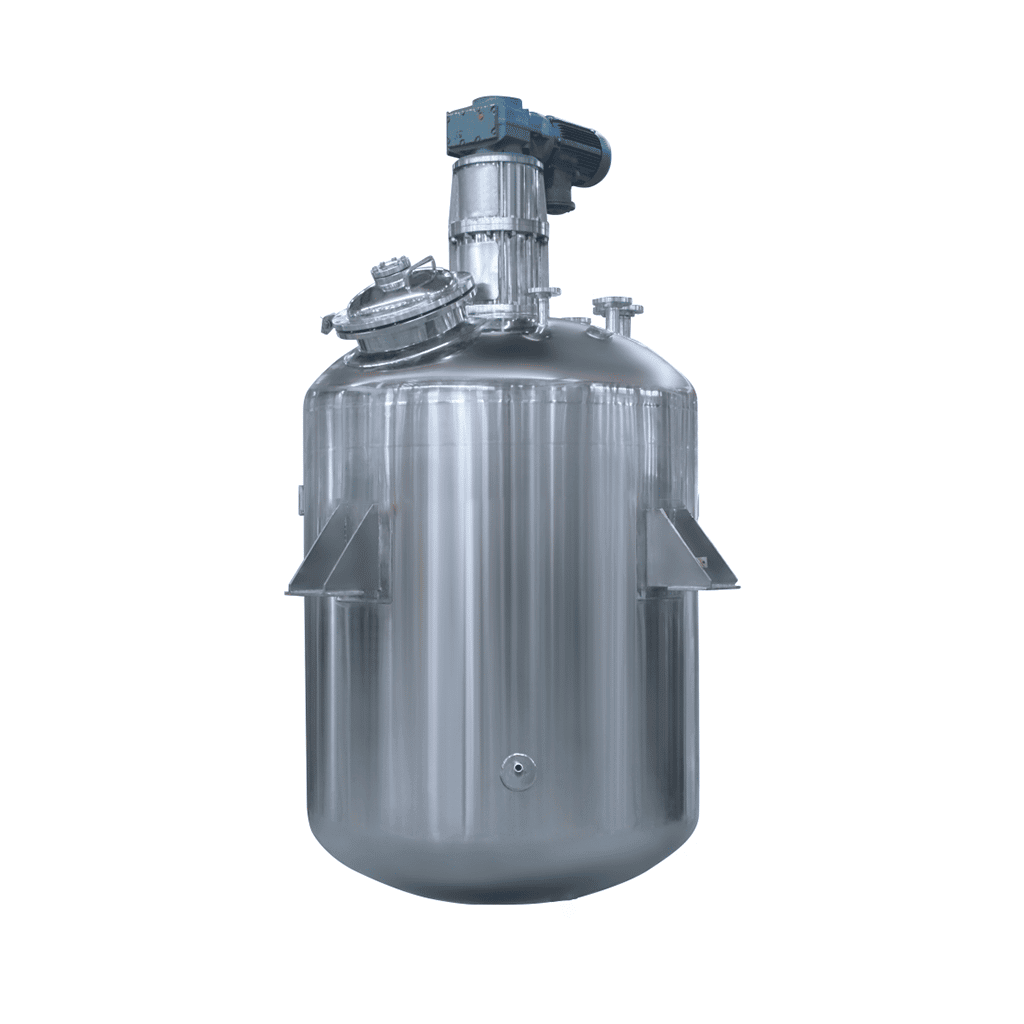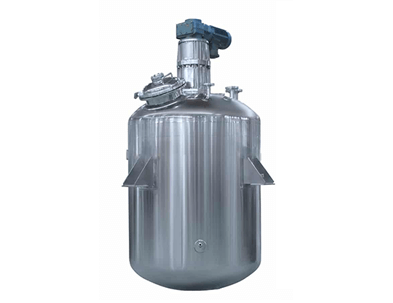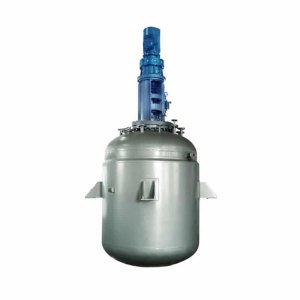
-24-1.jpg)
Stainless Steel Reactor
Stainless Steel Reactor: used in dairy products, sugar, beverages, and other fields
Material
stainless steel (316, 304)
Capacity (L)
10-10000+
Mixing system
anchor, paddle, frame and others
Heating system
electric heating, oil heating and others
A stainless steel reactor is a stainless steel container equipment. The stainless steel reactor consists of a kettle body, a kettle lid, a stirrer, a jacket, a bracket, a transmission device, a shaft seal device, etc. Materials and openings can be made according to user needs and process requirements. Stainless steel reactors are mainly used for stirring, homogenizing, and mixing storage of dairy products, sugar, beverages, food, and various pharmaceuticals.
Request a quoteThe stainless steel reactor temperature automatic control system is mainly composed of a high-temperature resistant, high-pressure circulation pump and stainless steel pipes. The heating device and the pump are connected through the pipes to form a closed circulation system, which is mechanically driven by the pump. The heat transfer equipment of the heating device can be used to heat the thermal equipment, and then return to the heating device to continue heating, in a reciprocating cycle until the temperature of the production process is reached.

Design of temperature control system for stainless steel reactor
The broad understanding of a stainless steel reactor is a container for physical or chemical reactions. Through the structural design and parameter configuration of the container, the heating, evaporation, cooling, and low-speed mixing functions required by the process are achieved. The reactions of chemical products are divided into endothermic reactions and exothermic reactions. Too high or too low a temperature directly affects the speed of chemical reactions, which in turn affects the rate of chemical reactions. If the temperature is too high or too low, a variety of by-products will be produced, affecting the purity of the final product.
During the production process, the temperature of the stainless steel reactor will affect the manufacturing quality of chemical products, so accurately controlling the temperature of the stainless steel reactor is particularly important for manufacturing. The stainless steel reactor is composed of a stirring vessel and a stirrer. The stirring vessel includes a cylinder, heat exchanger elements, and components. The cylinder is a steel tank container, which can be installed in the tank-shaped raw material and perform chemical changes inside it. In order to maintain the reaction temperature, a heat exchange element needs to be set in the stainless steel reactor.
The stainless steel reactor is equipped with circulation pipes, hot water pipes, condensate water pipes, and driving stirring devices. The circulation pipe is equipped with a circulation device. The materials are brought into the stainless steel reactor through the feed port. The motor drives the stirring shaft to rotate, the stirring shaft drives the sliding plate to rotate, and then the sliding plate drives the stirring rod to rotate; then the reciprocating thread can drive the sliding plate to reciprocate up and down; and then the sliding block and chute limit the sliding plate. Make it move on the stirring shaft, fully react the materials, speed up the reaction rate, and reduce the production time.
The stainless steel reactor temperature automatic control system is often used to control the temperature of the reaction vessel. The matching reaction accessories generally consist of a reaction tank, agitator, etc. Using thermal oil for heating, the heating speed is fast. At the same time, pay attention to the selection of the automatic temperature control system of the stainless steel reactor. When selecting the oil pump, the selection must be based on the flow meter. If the oil pump does not have enough ingredients, it will lead to uneven temperature transmission of the oil temperature machine and the option cost will be too high.

Advantages of a temperature control system for stainless steel reactor
1. The stainless steel reactor temperature automatic control system maintains a constant temperature by controlling the material fluid temperature. This method is commonly used for temperature control of stainless steel reactors and is also the simplest method, and the control accuracy can meet the requirements of most reaction situations. By controlling the outlet temperature, the outlet temperature sensor is used to detect the system temperature, and then the collected signals are fed back to the thermostat. The thermostat calculates the collected signals in the internal PID to perform dual PID temperature control for heating and cooling. Using this control method, it is shown that the temperature of the controller and the mold temperature are not consistent, and the set temperature is usually about 20°C higher than that of the stainless steel reactor.
2. To measure the temperature of the heated object, a temperature sensor is installed directly in the stainless steel reactor. It is generally used when the temperature control accuracy is relatively high. The temperature set by the controller is consistent with the temperature requirements of the stainless steel reactor. Under normal circumstances, the stability of the stainless steel reactor temperature automatic control system is better than controlling the fluid temperature, and the repeatability in the production process control is better.
3. The stainless steel reactor is equipped with heat exchange fins inside. The left and right sides of the heat exchange fins are connected to cold water pipes and hot water pipes respectively. A water pump is installed at the right end of the hot water pipe. There are multiple U-shaped tubes connected to the front side of the outer wall of the stainless steel reactor; probes are connected to the right sides of the U-shaped tubes; a temperature sensor is installed on the right end of the probe; the temperature sensor signal is connected to a controller. A display screen is installed on the rear side of the upper-end surface of the controller, and a first button and a second button are installed on the front side of the upper-end surface.
4. Joint control is a combination of the above two methods. It can control the temperature of the materials in the stainless steel reactor and the reaction tank at the same time. In joint control, the location of the temperature sensor is extremely important. When placing the temperature sensor, the shape, structure, and location of the cooling channel must be considered. In addition, the temperature sensor should be placed at the temperature control point of the stainless steel reactor.
When using the temperature control system, it is necessary to effectively check whether the valves, pipe fittings, insulation layers, and pipelines on the connecting pipelines of the stainless steel reactor are intact and whether there are leaks. At the same time, check whether the handle or handwheel of the manual valve operation is intact during operation, whether the valve is in a closed state, whether the valve opens or closes smoothly, and whether the safety valve is in a closed state. Careful inspection can avoid accidents and safety accidents in stainless steel reactors.




